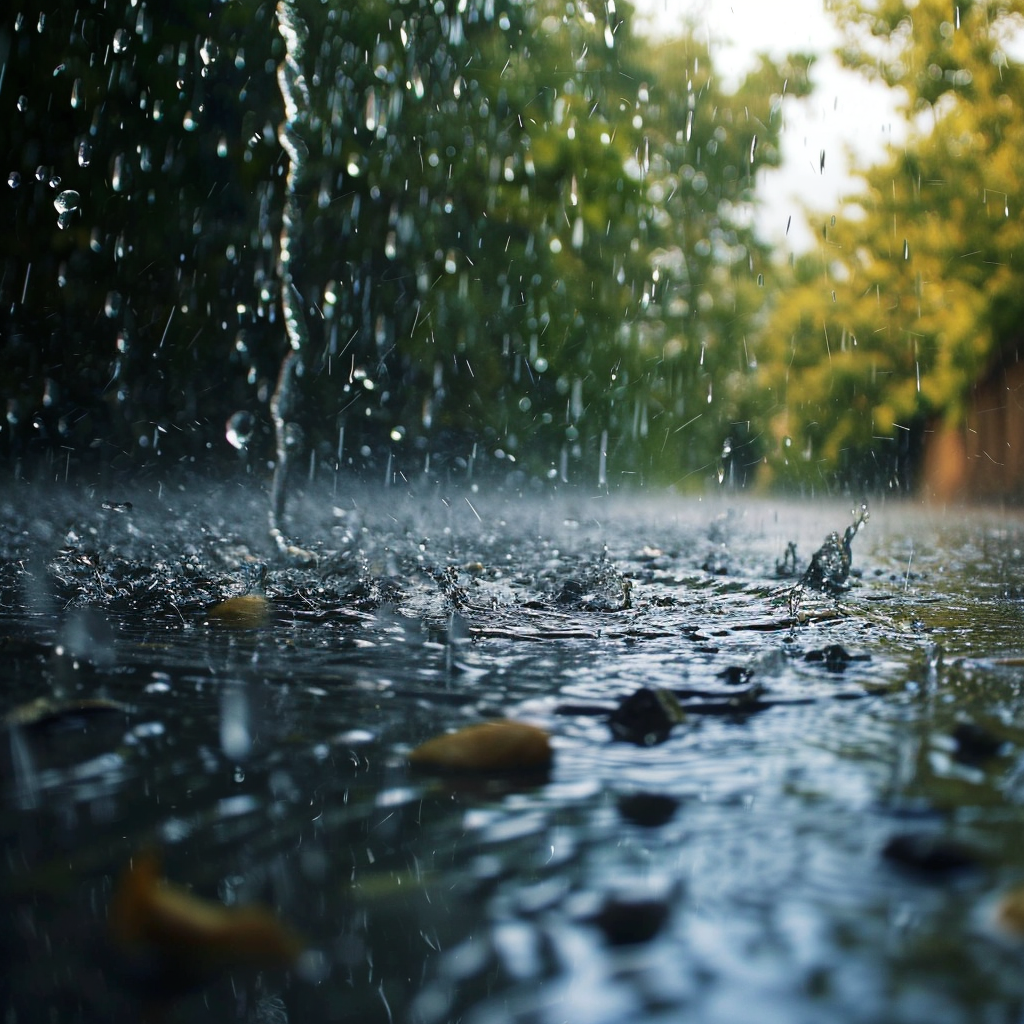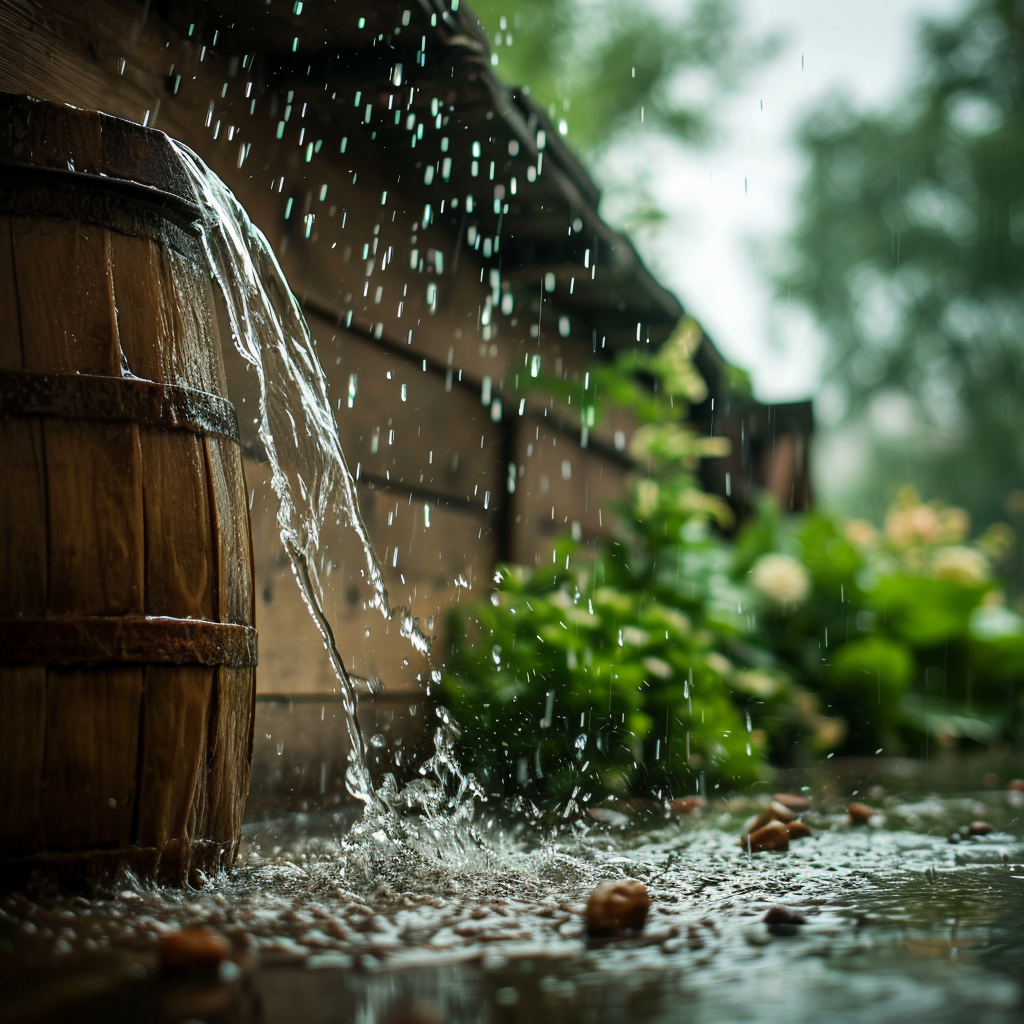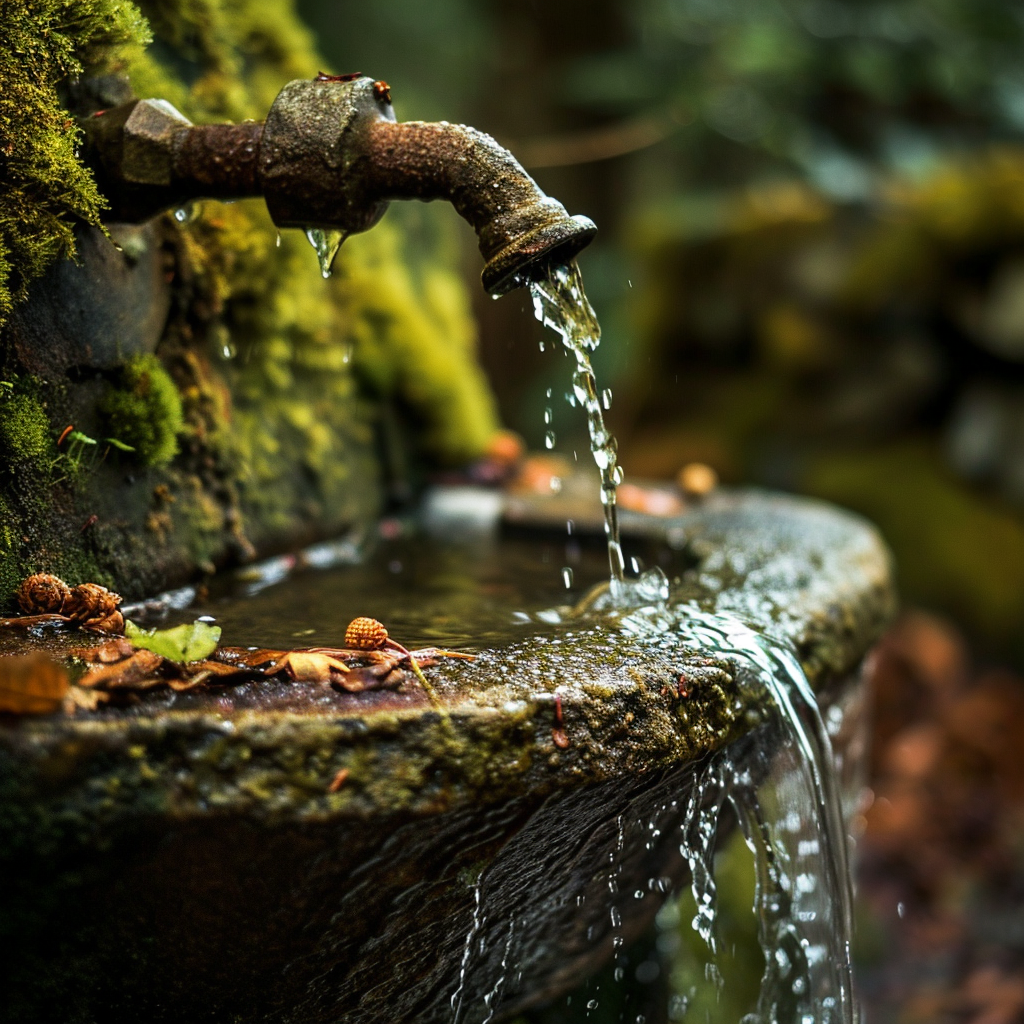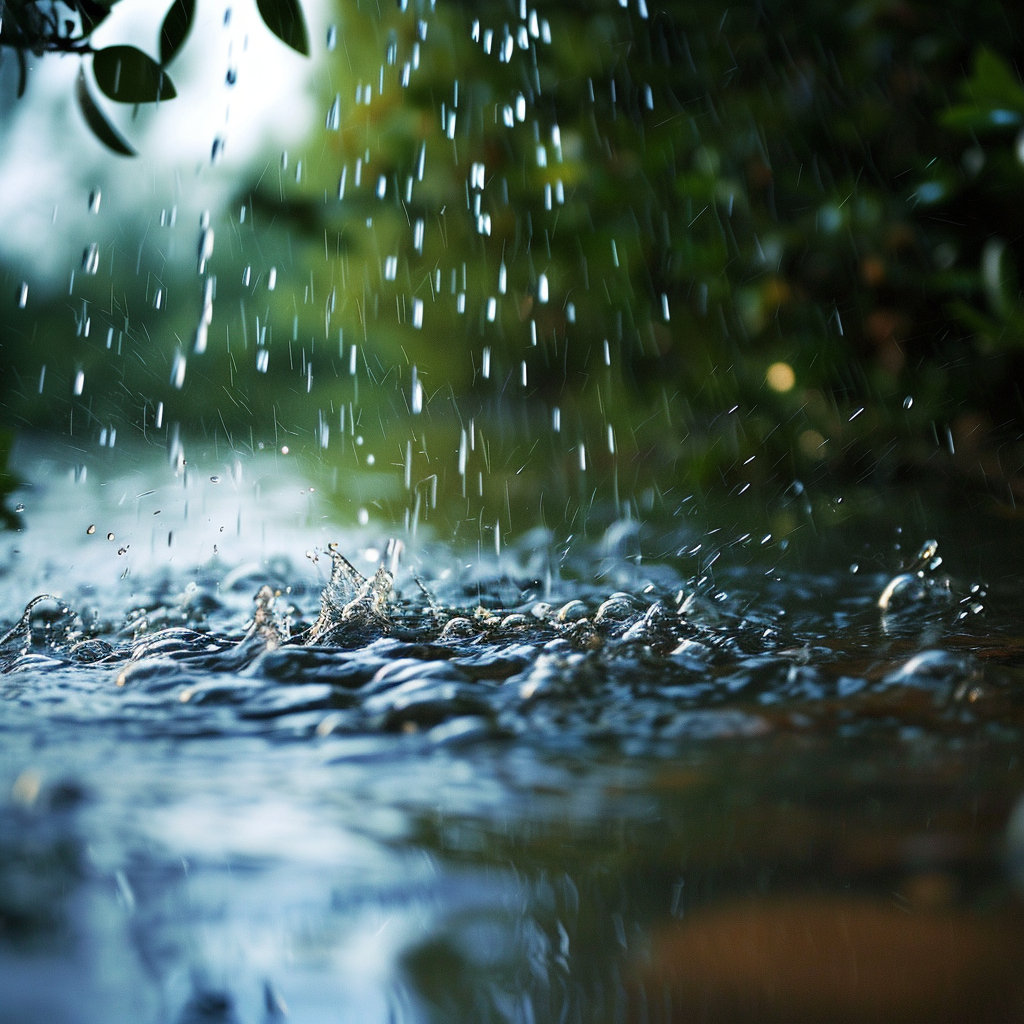So, you’re considering living off the grid and one of the things you’re wondering about is it safe to drink rain water? Well, it’s a fair question! Rainwater can be a valuable resource, especially for those who live in remote areas or have limited access to clean water sources. In this article, we’ll dive into the topic and explore whether rainwater is safe to drink or if there are any precautions you should take.
Now, rainwater is generally considered safe to drink, especially if you collect it properly. However, it’s important to note that rainwater isn’t automatically clean and suitable for consumption straight from the sky. Rainwater can pick up contaminants such as pollution, dust, pollen, and even bird droppings as it falls through the atmosphere and lands on rooftops or other surfaces. This is why it’s crucial to have a proper rainwater harvesting system in place to ensure the water is filtered and purified before drinking.
In the upcoming article, we’ll discuss different methods of collecting rainwater and the necessary steps to make it safe for drinking. We’ll explore techniques like installing a rain barrel, using a filtration system, or even implementing a UV disinfection method. We’ll also touch upon potential risks associated with rainwater consumption and how to mitigate them. So, if you’re considering relying on rainwater as a drinking source while living off the grid, stay tuned, as we’ll provide you with all the information you need to make an informed decision.
What is rainwater?
Rainwater is the water that falls from the atmosphere as a result of condensation of water vapor. It is a natural resource that has been used by humans for centuries. Rainwater is generally fresh and free from impurities when it first falls from the sky. However, the composition and safety of rainwater can be affected by various factors.
Composition of rainwater
Rainwater is composed mainly of water molecules, but it also contains other substances that can influence its quality. These substances include gases, minerals, and pollutants that are present in the atmosphere. The composition of rainwater can vary depending on the region and the environmental conditions.
Sources of rainwater
Rainwater is formed through a process called precipitation, which involves the condensation of water vapor in the atmosphere. The main sources of rainwater are clouds, which are formed when warm air rises and cools down, causing water vapor to condense into droplets. These droplets eventually grow in size and fall to the ground as rain.

Is rainwater safe to drink?
The safety of rainwater for drinking purposes is a topic of debate among experts. While rainwater is generally considered safe to drink when it is fresh and free from contaminants, there are potential risks and factors that need to be considered.
Potential contaminants in rainwater
Rainwater can be contaminated by various substances as it falls through the atmosphere and interacts with its surroundings. These contaminants can include dust, pollen, bacteria, viruses, chemicals from air pollution, and even bird droppings. However, the concentration of these contaminants is generally low and may not pose a significant risk.
Factors affecting the safety of rainwater
The safety of rainwater for drinking depends on several factors. One important factor is the cleanliness of the collection surface. If rainwater is collected from a clean and well-maintained surface, the risk of contamination is reduced. Another factor is the storage and handling of rainwater. Proper storage tanks and regular maintenance can help prevent the growth of bacteria and other harmful organisms.
Benefits of drinking rainwater
Despite the potential risks, there are several benefits of drinking rainwater. Rainwater is a natural source of water that does not require expensive treatment processes like tap water. It is also free from added chemicals, such as chlorine, which can be found in tap water. Additionally, drinking rainwater can reduce the reliance on municipal water supplies and promote water conservation.
Common misconceptions about rainwater safety
There are some common misconceptions about the safety of rainwater. One misconception is that rainwater is always safe to drink. While rainwater is generally safe, it can become contaminated during collection and storage. Another misconception is that rainwater is always pure and clean. In reality, the composition of rainwater can be affected by various factors, including air pollution.
Methods of collecting and storing rainwater
To ensure the safety of rainwater for drinking, it is important to collect and store it properly. There are various methods and systems available for rainwater harvesting.
Rainwater harvesting systems
Rainwater harvesting systems are designed to collect and store rainwater for later use. These systems can range from simple setups, such as rain barrels, to more complex systems, such as underground tanks and filtration systems. The collected rainwater can be used for various purposes, including drinking, irrigation, and household chores.
Types of rainwater storage tanks
There are different types of rainwater storage tanks that can be used to store collected rainwater. These tanks can be made from various materials, including plastic, fiberglass, concrete, and metal. The choice of tank material depends on factors such as cost, durability, and the intended use of the stored rainwater. Additionally, proper installation and maintenance of the tanks are crucial to prevent contamination.
Preventing contamination during collection and storage
To ensure the safety of rainwater, it is important to prevent contamination during the collection and storage process. This can be achieved by using clean collection surfaces, such as rooftops or specially designed catchments. It is also important to regularly clean and maintain rainwater storage tanks to prevent the growth of bacteria and other harmful organisms.
Filtering and purifying rainwater
While rainwater is generally safe to drink, it is recommended to filter and purify it before consumption to further reduce the risk of contamination.
Importance of filtering rainwater
Filtering rainwater can remove particles, sediment, and certain contaminants that may be present. This can help improve the taste and appearance of the water. Additionally, filtering can help remove bacteria, parasites, and other microorganisms that may pose a health risk.
Types of filters for rainwater
There are various types of filters available for rainwater filtration. These include sediment filters, activated carbon filters, and ceramic filters. Each type of filter has its own advantages and limitations, and the choice of filter depends on factors such as the level of filtration required and the desired flow rate.
Water disinfection methods
In addition to filtration, disinfection methods can be used to further purify rainwater. Common disinfection methods include chlorination, ultraviolet (UV) light treatment, and ozonation. These methods can help kill or inactivate bacteria, viruses, and other harmful microorganisms. The choice of disinfection method depends on factors such as the level of contamination and personal preferences.
Testing rainwater for safety
Regular testing of rainwater is important to ensure its safety for drinking purposes. Testing can help identify any potential contaminants and determine whether additional treatment is required.
How to test for contaminants
There are various methods available for testing rainwater for contaminants. These methods can include laboratory testing or home test kits. Laboratory testing provides more accurate and detailed results, while home test kits can give a quick and convenient indication of water quality. Testing can help detect bacteria, heavy metals, chemicals, and other potential contaminants.
Lab testing vs. home test kits
Both laboratory testing and home test kits have their own advantages and limitations. Laboratory testing is performed by trained professionals and can provide comprehensive results. However, it can be more expensive and time-consuming. On the other hand, home test kits are more affordable and can provide quick results, but they may not be as accurate or as comprehensive as laboratory testing.
Understanding safe drinking water guidelines
When testing rainwater for safety, it is important to refer to safe drinking water guidelines and regulations. These guidelines provide recommended limits for various contaminants and help determine whether the water is safe for consumption. It is important to regularly monitor rainwater quality and take appropriate actions if the test results indicate potential health risks.

Uses of rainwater
Rainwater can be used for various purposes besides drinking. Harvested rainwater can provide an alternative source of water for various household and outdoor needs.
Irrigation and gardening
One common use of rainwater is for irrigation and gardening. Rainwater can be used to water plants, lawns, and gardens, providing a natural and sustainable source of water. Using rainwater for irrigation can help conserve municipal water supplies and reduce the reliance on groundwater.
Flushing toilets and laundry
Rainwater can also be used for flushing toilets and doing laundry. These tasks can consume a significant amount of water, and using rainwater can help reduce the demand for treated water. Additionally, using rainwater for these purposes can help conserve energy and reduce water bills.
Alternative water source in emergencies
In times of water shortages or emergencies, rainwater can serve as an alternative source of water. Having a rainwater collection and storage system can provide a backup supply of water that can be used for drinking, cooking, and other essential needs. It is important to regularly maintain and monitor the stored rainwater to ensure its safety and quality.
Common concerns and precautions
While rainwater is generally safe to drink, there are some common concerns and precautions that need to be considered.
Chemical pollutants in rainwater
Rainwater can potentially contain chemical pollutants from industrial activities, air pollution, and agricultural practices. These pollutants can include heavy metals, pesticides, and various chemicals. It is important to be aware of the potential sources of pollution in the area and take appropriate precautions, such as using proper filtration and testing methods.
Possible health risks
Although rainwater is generally safe to drink, there is a small risk of bacterial and viral contamination. This risk can be minimized by following proper collection, storage, and treatment practices. It is also important to be aware of any local disease outbreaks or contamination incidents that may affect the safety of rainwater.
Precautions for vulnerable populations
Certain populations, such as infants, young children, pregnant women, and individuals with compromised immune systems, may be more susceptible to the potential risks of drinking rainwater. It is important to take extra precautions and consult with healthcare professionals if needed.
Environmental impact of rainwater harvesting
Rainwater harvesting can have several positive environmental impacts, making it a sustainable water management practice.
Conserving municipal water supplies
By using rainwater for various purposes, such as irrigation and household chores, less treated water is needed from municipal supplies. This can help conserve water resources and reduce the strain on water treatment facilities.
Reducing stormwater runoff and flooding
Rainwater harvesting can also help reduce stormwater runoff and the risk of flooding. When rainwater is collected and stored, it is prevented from quickly entering the drainage system and overwhelming it. This can help reduce the risk of flooding and water pollution.
Promoting sustainable water use
By relying on rainwater as a natural source of water, individuals can promote sustainable water use and reduce their environmental impact. Rainwater harvesting encourages the efficient use of water resources, reduces the demand for treated water, and promotes self-sufficiency.

Legislation and regulations
The use of rainwater for drinking purposes may be subject to local and national regulations and guidelines. It is important to be aware of any specific regulations in your area before implementing a rainwater harvesting system. Some areas may require permits or have restrictions on the use of rainwater.
Local and national regulations
Different countries and regions may have their own regulations and guidelines regarding the collection, storage, treatment, and use of rainwater. These regulations may cover aspects such as water quality standards, permissible uses of rainwater, and installation requirements for rainwater harvesting systems.
Permits for rainwater harvesting systems
In some areas, permits may be required for the installation of rainwater harvesting systems. These permits may involve inspections, adherence to specific guidelines, and compliance with building codes. It is important to check with the local authorities to ensure compliance with any applicable regulations.
Conclusion
In conclusion, rainwater can be a safe and sustainable source of drinking water when collected, stored, and treated properly. While there are potential risks and factors that need to be considered, the benefits of drinking rainwater and its environmental impact make it a viable option for individuals seeking an alternative water source. By following recommended practices for collection, storage, filtration, and testing, you can ensure the safety and quality of rainwater for drinking purposes. Remember to stay informed about local regulations and guidelines, and consult with experts if needed. Enjoy the benefits of rainwater while being mindful of its potential risks and taking necessary precautions.




